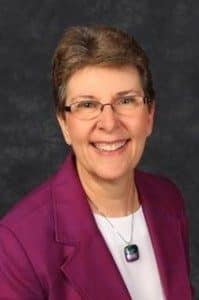Practitioner Implications in Competency Education: An Interview with Rose Colby
CompetencyWorks Blog

This interview originally appeared in the CSSR October 2014 Newsletter.
Rose Colby is a career educator who has worked for the last eight years as a competency-based learning and assessment specialist. She works extensively in New Hampshire schools, as well as more broadly in schools across the country as the competency education movement expands. Colby recently began working with a number of CSSR schools on the development of competencies and the review of grading and assessment practices. We sat down with her recently to discuss the practitioner implications of competency education.
For Colby, competency education (CE) boils down to honoring “wherever and whenever kids do learning based on their personal learning plan.” Through the use of high quality assessment methods, i.e. performance tasks, kids move forward based on demonstrated mastery of course competencies. She is quick to cite the abundance of research: CE is aligned with what cognitive science tells us about how we learn-not the current silo-ing of standards. The following are three areas of focus that Colby suggests for practitioners moving towards these transformational practices: core beliefs; writing competencies; and grading & scheduling. She also shared tips on how to get started exploring this work.
Core Beliefs
For Colby, the traditional instructional model includes: curriculum, instruction, assessment, and grading. A transformational instructional model includes: high quality competencies, performance assessment, personalized learning pathways and dynamic grading. In the traditional model educators approach the educational setting as “here’s what you need to know, and how I’m going to teach it.” In CE, educators consider the experience and mastery that individual students bring to the learning environment to determine a personalized learning progression. Colby believes that what’s best for all kids are practices that are offered to all kids and not particular groups. She worries that too often schools offer these highly differentiated, personalized pathways for kids who are in danger of not graduating, when in fact they better engage all students in their own education.
Writing Competencies
Developing high quality competencies is paramount for personalized learning progressions. Colby references the working definition of CE: competencies include explicit, measureable, transferable learning objectives that empower students, and include application and creation of knowledge along with the development of important skills and dispositions. She succinctly breaks it down for educators: competencies are unpacked into performance indicators that are guaranteed to have the rigor necessary to ensure transferability of content and skills. Valid and reliable rubrics are developed to assess student work. Colby emphasizes the importance of consistency in the rubric descriptions found in the proficient category: proficiency must mean that a student has shown you that they have applied learning.
Grading/Scheduling
Based on extensive experience navigating the path toward CE with schools and districts across the country, Colby readily admits that changing grading and scheduling practices provokes the most resistance. She emphasizes that grading must be different, but recommends that grading be the last thing you grapple with as grading alone will not change the system. “Traditional grading does not fit a CE system: grading for CE means a student has met a performance standard and is graded on mastery; traditional grading measures completion and compliance.” Colby finds that traditional scheduling practices are built around adult needs rather than student needs. In a competency-based system time and resources need to be redeployed around student needs to respect anytime learning and personalized progressions. A transformational schedule is less restrictive with allowances for online learning, extended learning opportunities, and learning studios.
Getting Started
In areas with highly traditional set-ups, Colby is a proponent of a lab school-within-school. “Small groups of teachers who are skilled practitioners and able to work together collaboratively, productively and efficiently can work through a lot more in a shorter amount of time.” She believes this approach allows other educators to watch the work develop, engage with the work in different ways, and ultimately be better prepared to magnify the model in other parts of the system. Colby also emphasizes the critical role of strong leadership at the district and school level, as well as the role of effective systems of communication to move traditional comprehensive systems towards more transformational practices.
Anna Fazekas is a school change coach with The Center for Secondary School Redesign. Ms. Fazekas began her career in education as a high school science teacher in the Chicago Public Schools. She is the co-author of: First Response: A Guide to Designing and Delivering Classroom Interventions (2013) and Building a Pathway to the Future: Maximizing High School Guidance and Advisory Support (2011). Ms. Fazekas also edited CSSR’s i3 New England Network Technical Assistance Platform, an interactive online resource that tells the five-year story of school transformation in thirteen schools in the i3 New England Network for Personalization and Performance. Anna can be contacted at [email protected]